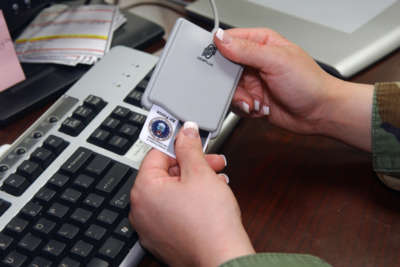
Keeping soldiers in the Army may start with making bases more convenient
Making bases easier to access could help bring the Army to 2019, said the director of installation services.
You may not expect it, but soldiers like farmers’ markets. They also like Amazon packages delivered on time, pizza brought directly to their house and taking a Lyft home from the bar.
Those options are pretty sparse for many soldiers who live on bases, and that’s an issue for an Army that missed its recruiting goal last year and which is trying to retain its best talent.
Carla Coulson, Army director of installation services, said the military branch needs to rethink the permeability of its bases if it wants to maintain a satisfactory quality of life for soldiers.

“We need to change or we’re going to continue to lose interest in serving in the military,” Coulson said Monday at the Defense Communities National Summit in Washington. “We need to change on our Army installations. People don’t want to live on Army installations anymore.”
Coulson said that’s different from decades ago, when living on base was a premium.
“Our soldiers and families disdain living on an installation,” Coulson said. “In part, a lot of it is because they get used to service delivery when they want it, getting on a base is hard to do and the services once you’re there are not very good. Anyone who has been on an Army installation after 17:00 in the evening knows you have very few choices to get anything to eat.”
That puts the Army and soldiers in a tough spot considering the service is going through a privatized housing crisis, where mice, mold and lead paint are showing up in houses managed by companies contracted by the military.
What can the Army do?
Coulson said after talking to soldiers on five bases during a tour last summer that one of the biggest needs is to improve access to bases.
Related Stories

In the wake of the cyber sprint, OMB to develop new consolidated identity management guidance
The Defense Department is moving away from common access cards and plans to replace them with something in the vein of what Coulson is talking about.
Will Graves, the deputy product manager and chief engineer for biometrics enabling capability in DoD, said the Pentagon is planning several tests in Iraq or Afghanistan over the next year of face, DNA and other biometric modals.
“What we have been seeing lately is these new joint emerging requirements,” Graves said last December. “When we talk about voice, we actually are going to deploy voice to the theater next year. We have a project that has rapid DNA. We are working with the University of Virginia to create a rapid DNA device that’s actually built on a CD. It’s a 10-pound device. It’s not packable in a ruck yet. But it’s going to be very cheap. The device is going to be less than $10,000. The current device right now is about $225,000. We are going to deploy that in the Central Command region next year.”
Graves said these tests are part of how DoD is shifting the use of biometrics from just law enforcement to identity and access management.
Graves said some facilities are already using iris and fingerprint access.
Access isn’t the only issue though. Even once someone is on base things get frustrating.
“You should go and look at an Army installation or the installation of any military department and see what it looks like if you try to Google any street on that installation. It will look like a big white blob on your phone because they haven’t been mapped. Our mapping is very poor,” Coulson said. “If we want to move to something that looks like delivery to your doorstep then we are going to have to make some changes there as well. I don’t know why we wouldn’t map and make that available. Everything can be seen from above.”
As for alternative transportation methods, those aren’t easily found either. The streets of cities are littered with scooters to ride, but soldiers don’t have that option. Coulson said, as odd as it may seem, she’d like to see soldiers on those scooters.
“We have many, many gaps in our installations,” Coulson said. “Those gaps can be filled by the communities through the services provided off our installations. We need to work together to define what they are, to prioritize them and work together to get after them.”
Copyright © 2025 Federal News Network. All rights reserved. This website is not intended for users located within the European Economic Area.
Scott Maucione is a defense reporter for Federal News Network and reports on human capital, workforce and the Defense Department at-large.
Follow @smaucioneWFED




